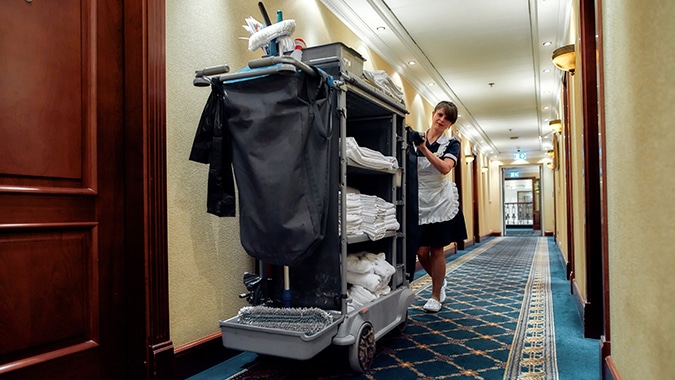Before you say bullying is not a problem at your workplace, consider this: More than 60 million U.S. employees have said they were directly impacted by bullying at work, and 61% of U.S. workers have knowledge of abusive conduct at work.
Business owners and operators may not be aware of bullying by their managers or other employees. As Connell Foley attorney Molly Kellett explained Friday morning, no New Jersey or federal statute expressly prohibit bullying in the workplace by name, though there is a bill in the state Legislature. Bullying usually gets classified as another workplace problem, such as creating a hostile workplace, and a lot of times, employees do not report it.
Beyond that, it can be hard to tell what’s bullying and what is legitimate management, which sometimes includes criticizing an employee’s performance and taking punitive action. So what’s the difference?
At NJBIA’s Mitigate Your Risk seminar, Kellett explained that bullying cases can be straightforward: physical or verbal abuse, yelling and screaming, isolating or excluding employees, intimidation, and undermining their performances. Other types of mistreatment can be harder to identify, namely, unfair criticism or unfairly blaming an employee.
Even so, there are ways to tell the difference between legitimate management actions and bullying. The key, she said, is whether the actions are unrelated to an employer’s legitimate business interests.
“It’s not all management activities,” Kellett said. “You are allowed to manage. You can give employees constructive criticism. You can criticize them. You can tell them to do better.
“But if you (or one of your managers) are targeting them in a way that has no relation to your business interest, that’s probably bullying,” she said.
Kellett urges employers to take bullying seriously. Among other things, bullying costs a business on average 400 hours of lost production due to absences and low morale.
To make sure your business is protected, Kellett recommends three steps.
- Have an anti-bullying policy that defines what bullying is, expressly prohibits it, and includes examples and scenarios of what is inappropriate.
- Mandate interactive training sessions so everyone understands what is acceptable and what is not.
- Enforce the policy evenly. This includes an effective system for determining whether or not the complaint is legitimate. Remember that sometimes the difference between bullying and legitimate criticisms can be subjective. If you do determine that bullying is taking place, make sure you follow through. Enforce the policy in a fair and timely manner.
More generally, Kellett said to keep tabs on managers to ensure they are treating employees the way you expect them to.
The one thing you don’t want to do is downplay any complaints of bullying.
“Don’t tell someone, ‘it’s no big deal, don’t worry about it, work with somebody else,’” Kellett said. “You don’t want to make it seem you’re pushing it under the rug.”


